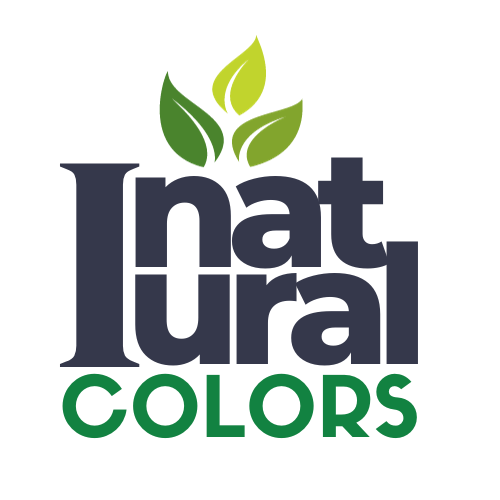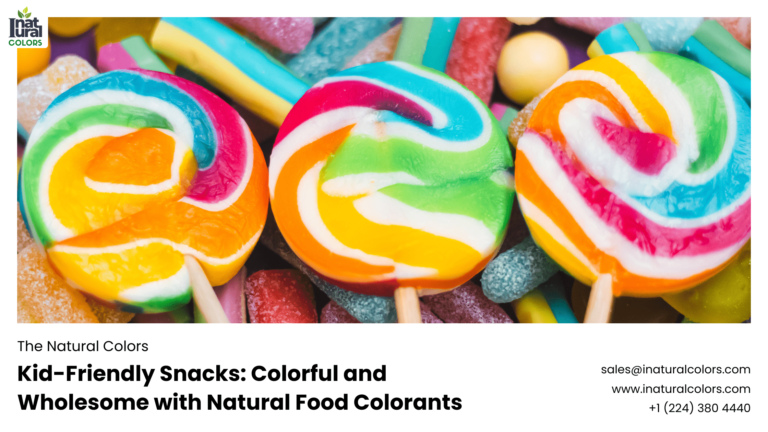Beautiful Plants For Your Interior

Case Study: Successful Brands Using Natural Colors
Introduction
In the world of branding and product development, natural colors have emerged as a significant trend. But what exactly are natural colors, and why are they so important? Natural colors are derived from plants, minerals, and other natural sources, offering an eco-friendly alternative to synthetic dyes. These colors are not only safer for consumers but also better for the environment. As awareness about health and sustainability grows, many successful brands are embracing natural colors to enhance their products and appeal to a more conscious consumer base.
The Shift Towards Natural Colors
Historical Context
Historically, natural colors were the norm. Before the advent of synthetic dyes in the 19th century, all colors used in textiles, food, and cosmetics came from natural sources. With industrialization, synthetic dyes became popular due to their vibrant hues and cost-effectiveness. However, concerns over health and environmental impacts have sparked a resurgence in natural color usage.
Modern Trends
Today, consumers are more informed and concerned about what goes into the products they use. This shift has led to a growing demand for natural ingredients, including colors. Brands across various industries are now adopting natural colors to meet this demand and differentiate themselves in a crowded market.
Benefits of Using Natural Colors
Environmental Impact
Natural colors are typically derived from renewable resources, making them more sustainable. Unlike synthetic dyes, which often involve harmful chemicals and significant pollution, natural colors have a much smaller environmental footprint. They decompose naturally and do not contribute to soil and water contamination.
Health Benefits
Many synthetic dyes are linked to health issues, ranging from allergies to more serious conditions. Natural colors, being free from harmful chemicals, reduce these risks. For health-conscious consumers, products with natural colors are a safer choice.
Consumer Preferences
Today’s consumers prefer products that align with their values. Natural colors resonate with the increasing demand for clean, transparent, and ethical products. Brands using natural colors can build trust and loyalty among their customers.
Case Study 1: Starbucks
Brand Overview
Starbucks is a global coffeehouse chain known for its commitment to quality and sustainability.
Implementation of Natural Colors
Starbucks has gradually shifted towards using natural colors in its beverages and food items. For instance, the company replaced artificial coloring in its popular Pumpkin Spice Latte with real pumpkin puree, giving it a natural orange hue.
Impact on Brand Image and Sales
This move not only improved the product’s health appeal but also strengthened Starbucks’ image as a health-conscious brand. The change was well-received by consumers, leading to an increase in sales and customer satisfaction.
Case Study 2: Lush
Brand Overview
Lush is a cosmetics company known for its handmade, ethical products.
Use of Natural Colors in Products
Lush uses a variety of natural colors derived from fruits, vegetables, and flowers in its products. For example, their bath bombs and soaps feature vibrant colors from ingredients like beetroot powder and spirulina.
Customer Response and Market Growth
Lush’s commitment to natural colors has earned them a loyal customer base. Consumers appreciate the transparency and ethical sourcing, which has significantly contributed to the company’s growth and market position.
Case Study 3: Ben & Jerry’s
Brand Overview
Ben & Jerry’s is a renowned ice cream brand with a strong commitment to social responsibility.
Transition to Natural Colors
In recent years, Ben & Jerry’s has phased out artificial colors in favor of natural alternatives. They use fruit and vegetable extracts to achieve the desired hues in their ice creams.
Effects on Product Appeal and Sales
The transition to natural colors has enhanced the brand’s appeal to health-conscious consumers. It has also differentiated Ben & Jerry’s in a competitive market, boosting sales and brand loyalty.
Challenges in Using Natural Colors
Sourcing Issues
Finding reliable sources for natural colors can be challenging. The availability of certain plants or minerals can fluctuate due to environmental factors, affecting supply chains.
Cost Implications
Natural colors are often more expensive to produce than synthetic dyes. This can lead to higher production costs, which may be passed on to consumers.
Stability and Shelf Life
Natural colors can be less stable than synthetic ones, leading to issues with consistency and shelf life. Brands need to invest in research and development to overcome these challenges.
Innovations in Natural Color Technology
Advances in Extraction Methods
New technologies are making it easier and more cost-effective to extract colors from natural sources. These methods improve yield and purity, making natural colors more viable for commercial use.
Sustainable Sourcing
Efforts to sustainably source natural color ingredients are gaining traction. This includes practices like organic farming and fair trade, ensuring that the production of natural colors is both ethical and eco-friendly.
Future Trends
The future of natural colors looks promising, with ongoing research aimed at expanding the palette of available colors and improving their stability and cost-effectiveness.
Consumer Perception
Survey Data on Preferences
Surveys indicate that a significant number of consumers prefer natural colors over synthetic ones. This preference is particularly strong among younger demographics, who are more health and environmentally conscious.
Psychological Impact of Natural Colors
Natural colors are often perceived as more trustworthy and wholesome. They can evoke positive emotions and associations, enhancing the overall appeal of a product.
Comparing Synthetic vs. Natural Colors
Environmental Footprint
Synthetic colors typically have a larger environmental footprint due to the chemicals and processes involved in their production. Natural colors, on the other hand, are more eco-friendly and biodegradable.
Health Impacts
While synthetic dyes have been linked to various health issues, natural colors are generally safer and less likely to cause adverse reactions.
Consumer Trust
Brands that use natural colors often enjoy higher levels of consumer trust. Transparency in ingredient sourcing and processing plays a key role in building this trust.
Regulations and Standards
FDA Guidelines
The FDA has stringent guidelines for color additives in food, cosmetics, and pharmaceuticals. Natural colors must meet these standards to be approved for use.
International Standards
Different countries have their own regulations regarding natural colors. Brands operating internationally must navigate these varying standards to ensure compliance.
Compliance and Certification
Obtaining certifications for natural colors can be a complex process, but it is essential for gaining consumer trust and meeting regulatory requirements.
Marketing Strategies Using Natural Colors
Branding and Packaging
Brands often highlight their use of natural colors on packaging and in marketing materials. This can include certification logos, ingredient lists, and storytelling about the sourcing process.
Advertising Campaigns
Advertising campaigns that focus on the benefits of natural colors can resonate strongly with consumers. Highlighting the environmental and health benefits can be particularly effective.
Social Media Influence
Social media platforms are powerful tools for promoting the use of natural colors. Influencers and brand ambassadors can help spread the message and connect with a broader audience.
Future of Natural Colors in Branding
Emerging Brands
New brands are entering the market with a strong focus on natural ingredients, including colors. These brands are setting new standards and pushing the industry towards more sustainable practices.
Long-term Trends
The trend towards natural colors is likely to continue as consumers become even more health and eco-conscious. Brands that embrace this shift will be better positioned for long-term success.
Potential Market Shifts
As the demand for natural colors grows, we may see a significant shift in the market. Companies that fail to adapt could lose market share to more forward-thinking competitors.
Conclusion
In conclusion, the use of natural colors in branding is more than just a trend; it is a reflection of a broader shift towards sustainability and health consciousness. Successful brands like Starbucks, Lush, and Ben & Jerry’s have shown that embracing natural colors can lead to increased consumer trust, loyalty, and market growth. While there are challenges, the benefits far outweigh the drawbacks, making natural colors a smart choice for brands looking to connect with modern consumers.
FAQs
What are natural colors?
Natural colors are derived from natural sources such as plants, minerals, and animals. They are used as alternatives to synthetic dyes in various products, including food, cosmetics, and textiles.
Why are brands switching to natural colors?
Brands are switching to natural colors due to growing consumer demand for health-conscious and environmentally friendly products. Natural colors offer a safer, more sustainable option compared to synthetic dyes.
Are natural colors more expensive?
Yes, natural colors can be more expensive to produce than synthetic dyes due to factors like sourcing, extraction, and stability. However, the benefits in terms of health and sustainability often justify the higher cost.
How do natural colors impact health?
Natural colors are generally considered safer than synthetic dyes, which can be linked to health issues like allergies and hyperactivity. Using natural colors reduces the risk of adverse health effects.
What is the future of natural colors in branding?
The future of natural colors in branding looks promising, with increasing consumer demand driving innovation and adoption. Brands that embrace natural colors are likely to benefit from enhanced trust and loyalty, as well as a competitive edge in the market.



